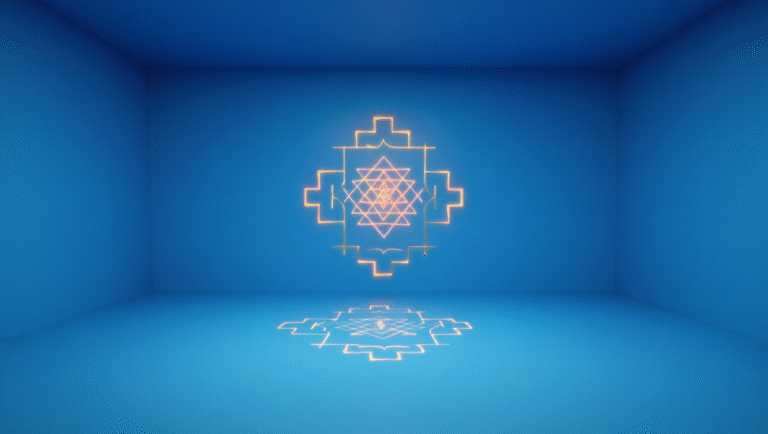Breathwork for Better Sleep
Sleep struggles are more common than you think. If you’ve ever found yourself staring at the ceiling at 2 a.m., mind racing, you’re definitely not alone. The good news: you don’t need a fancy gadget or a complete bedroom makeover to get better rest. Breathwork—yes, simple breathing exercises—can make a real difference. With just 15 minutes (sometimes less), you can help your body and mind relax, making it easier to drift off. Let’s dive into how you can make this work for you—no “woo-woo,” just practical, science-backed steps.
Why Breathwork Helps You Sleep
Before we get into the how, let’s quickly cover the why. Studies show that slow, intentional breathing can:
- Lower your heart rate
- Reduce stress hormones (like cortisol)
- Activate your parasympathetic nervous system (the “rest and digest” mode)
All of this creates the right conditions for falling asleep faster and enjoying deeper rest.
Real-Life Example: The 3 A.M. Wake-Up Fix
Last month, I had a client—a tech project manager—who kept waking up at 3 a.m., unable to fall back asleep. We tried a few breathwork techniques. After a week, he reported falling asleep 15-20 minutes faster and fewer middle-of-the-night awakenings. “It’s the first time I’ve felt genuinely rested in years,” he told me.
The trick isn’t fancy routines. It’s about making your body feel safe enough to let go.
15-Minute Breathwork Routine for Sleep
Ready to try it? Here’s a straightforward, step-by-step process you can start tonight. No incense, no chanting—just you, your breath, and a little practice.
Step 1: Set Up Your Space (2 minutes)
- Dim the lights or turn them off.
- Lie down in bed or sit comfortably with your back supported.
- If noise is an issue, use a white noise machine or a simple app like myNoise.
Optional but helpful: An eye mask, a weighted blanket Check price on Amazon, or a lavender pillow spray See today’s deal.
Step 2: Choose Your Breathwork Technique (10 minutes)
Pick one of these evidence-based techniques. Try each for a few nights and see which works best for you.
4-7-8 Breathing
- Close your eyes. Inhale quietly through your nose for 4 seconds.
- Hold your breath for 7 seconds.
- Exhale completely through your mouth for 8 seconds (make a whoosh sound if you want!).
- Repeat for 4-8 cycles. If you get dizzy, shorten the counts but keep the ratio.
Box Breathing (aka Square Breathing)
- Inhale through your nose for 4 seconds.
- Hold your breath for 4 seconds.
- Exhale through your mouth for 4 seconds.
- Hold again for 4 seconds.
- Repeat for 1-3 minutes. Great for calming a busy mind.
Diaphragmatic Breathing (Belly Breathing)
- Place one hand on your chest, one on your belly.
- Breathe in deeply through your nose, letting your belly rise (not your chest).
- Exhale slowly through your mouth, feeling your belly fall.
- Continue for 5-10 minutes, focusing on the rise and fall.
Tip: If your mind wanders (it will!), gently bring your focus back to your breath.
Step 3: Quick Wind-Down (3 minutes)
- Scan your body from head to toe, relaxing any tense areas.
- If thoughts pop up, imagine placing them on a “mental shelf” for tomorrow.
- Repeat a calming phrase, such as “I am safe. I can rest now.”
Breathwork Tools & Accessories: What’s Worth It?
While you only need your breath, the right accessories can make the routine more inviting. Here’s a quick comparison:
| Name | Key Feature | Size/Material | Price Range | Amazon Link |
|---|---|---|---|---|
| Weighted Blanket | Adds gentle pressure, calms anxiety | 15 lbs, cotton | $35-$80 | Check price |
| Lavender Pillow Spray | Natural scent, supports relaxation | 4 oz, essential oils | $10-$22 | See today’s deal |
| White Noise Machine | Blocks distractions, aids focus | Compact, plastic | $20-$50 | View on Amazon |
| Eye Mask | Blocks light, easy to travel with | Silk/cotton | $7-$25 | Check price |
Honest take: Accessories are nice-to-have, not must-have. If you’re on a budget, start with breathwork alone. If you’re a gadget lover, try one tool and see if it helps. Weighted blankets tend to be the most impactful based on client feedback.
Quick Reference: 15-Minute Breathwork Checklist
- Set up sleep space: dim lights, get comfy (<2 min)
- Pick a breathwork style: 4-7-8, box, or belly breathing (10 min)
- Body scan & calming phrase (3 min)
- Optional: add lavender spray, eye mask, or weighted blanket
Helpful Apps & Resources
- Insight Timer – Free guided breathwork and sleep meditations
- Calm – Premium sleep stories and breathing tracks
- myNoise – Customizable white noise for better sleep
- National Sleep Foundation: Sleep Hygiene Tips
Frequently Asked Questions
- How fast will I see results?
*Most people notice improvement within a week, but consistency is key. Aim for 7 nights in a row before you judge.* - Can breathwork replace sleep medication?
Always talk to your doctor before making changes if you take prescription sleep aids. Breathwork can be a helpful addition, not a replacement, for medical advice. - Do I need to sit cross-legged or chant?
Nope. You can do these in bed, in pajamas, no chanting required.
Bottom Line
Breathwork is a free, science-supported way to unwind and fall asleep faster. Give it a try for a week—no need to overthink it. Just breathe, and let your body do the rest.
Some links in this post may be affiliate links. If you purchase through them, you pay the same price, and this blog may earn a small commission that helps keep it running.







